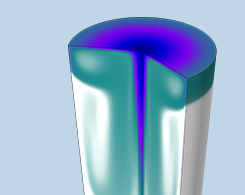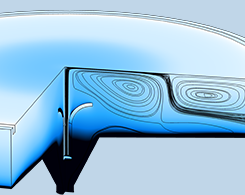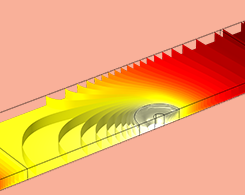Fluid & Heat Blog Posts

3 Approaches to Modeling Moving Loads and Constraints in COMSOL®
Learn 3 ways to model moving loads and constraints in COMSOL Multiphysics®: using variables, interpolation functions, and paths imported from CAD geometries.

Improving Architectural Designs with Building Physics Simulation
Building physics simulation can help engineers develop more energy-efficient architectural designs. We talked to Built Environments, Inc. to get a few examples of how.

Studying the Peltier and Seebeck Effects in Thermoelectric Devices
We go over 2 key concepts in themoelectricity, the Seebeck and Peltier effects, and how to account for them when simulating heating and cooling in thermoelectric devices.

How to Model Sparging in COMSOL Multiphysics®
Sparging, the process of bubbling a gas into a liquid, is seen most notably in carbonation, such as for soda and seltzer water. This mass transfer process can be modeled in COMSOL Multiphysics®.

How to Place Inlet and Outlet Boundary Conditions in CFD Simulations
When setting up fluid flow simulations, at what distance can we apply boundary conditions without interfering with the process? Here, we discuss how to place inlet and outlet boundary conditions.

Examining Heat Transfer in a Friction Stir Welding Process
Friction stir welding (FSW) is an efficient, cost effective, and environmentally friendly process that can be optimized by studying the heat transfer involved via modeling.

Describing Viscoelastic Behavior with an Oldroyd-B Benchmark
The Oldroyd-B model is used to define viscoelastic behavior in fluids such as clay, toothpaste, and oil. We present a benchmark model for a fluid with viscoelastic behavior under strain.

CFD Benchmark: Examining Fluid Flow in a Transonic Diffuser
You can analyze the fluid flow in a transonic diffuser using CFD simulation. Get details in this blog post featuring a benchmark model based on research by M. Sajben et al.
